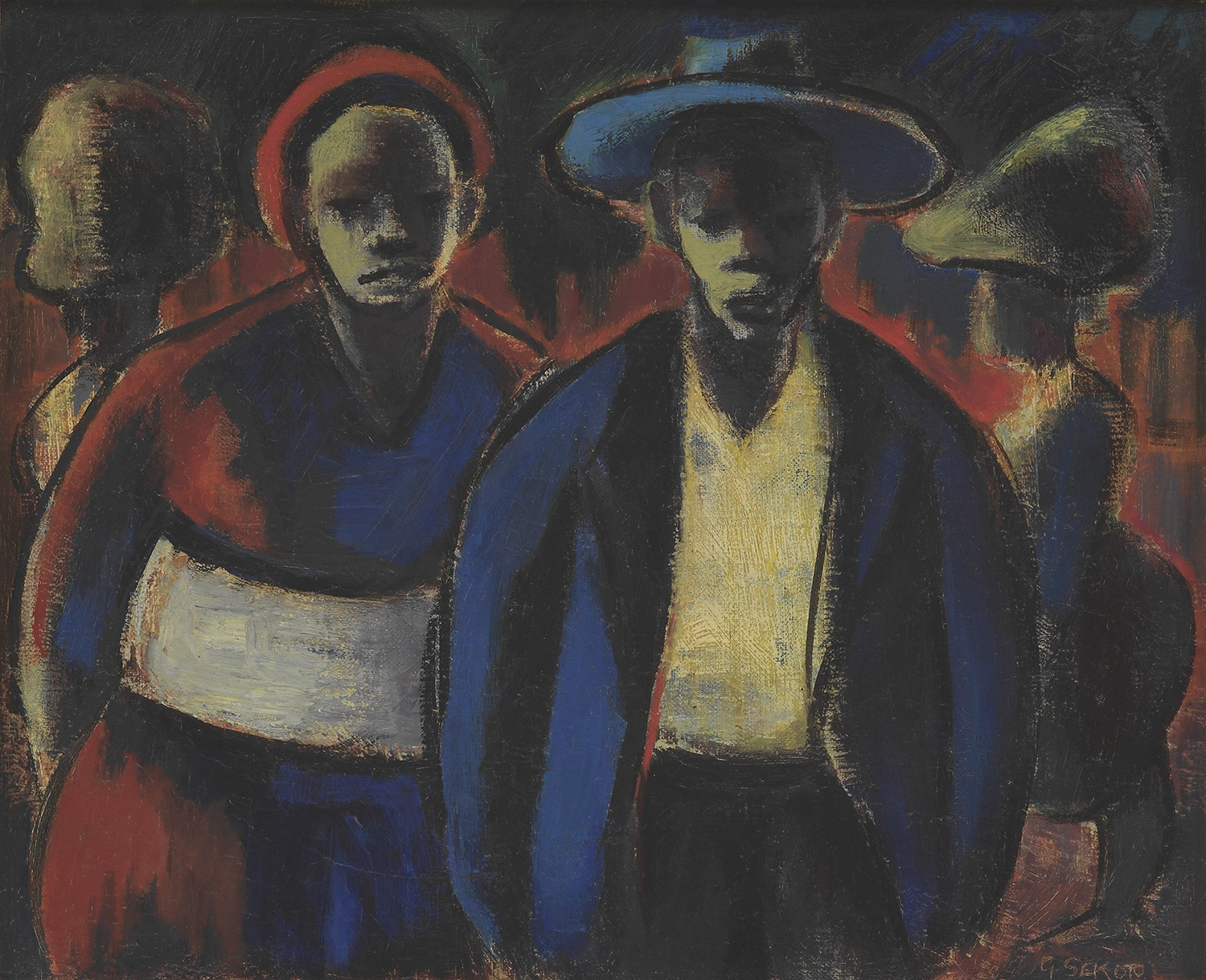Gerard SEKOTO (1913 – 1993)
BIOGRAPHY
Gerard Sekoto was born in Botshabelo, a German Lutheran Mission Station in the then Eastern Transvaal (now Mpumalanga), in the year in which the Natives Land Act was passed, resulting in many black South Africans being forcibly removed from their own land.
When Sekoto was five years old, his father was posted by the Lutheran Church to their mission school on the farm Wonderhoek, also in the Middelburg District. There, Sekoto spent his most formative years. He nurtured the memories of his rural childhood for the rest of his life, and in his letters he dwells at length on the experiences of his youth and early family life. The love and security he was shown as a child were a source of solace and strength during the difficult later years of his exile.
Sekoto started drawing early but did not have access to colour pencils until he was a teenager. On leaving school, Sekoto attended the Lutheran Mission Teacher Training College, Grace Dieu, in Pietersburg (now Polokwane), where, unusually, art classes were offered as part of the curriculum. While his training was in sculptural work, Sekoto had always favoured painting and drawing as means of expression. He worked at first with the relatively affordable medium of watercolour or tempera and later graduated to the more expensive medium of oil-painting as his ambitions grew.
His first solo exhibition, unusual at the time for a black artist, took place in Johannesburg in 1939, and in 1940, the Johannesburg Art Gallery bought his painting Yellow Houses – A Street in Sophiatown, its first acquisition of a work by a black artist. It is said that Sekoto had to pretend to be a cleaner, at that time, in order to see his own painting hanging in the gallery.
Sekoto’s experiences living in Sophiatown (Johannesburg), District Six (Cape Town), and Eastwood (Pretoria) gave rise to paintings that record the both the vitality and hardships of township life. His paintings from that time are historical records of a now vanished way of life. All three areas were bulldozed in the 1950s and 1960s.
In Cape Town, he became friendly with the founder members of the New Group, who were dedicated to modernising South Africa’s generally conservative art scene. A friendship with New Group sculptor Lippy Lipshitz was particularly important: it cemented Sekoto’s desire to bring sculptural weight into painting and awakened an interest in the African sculptural tradition that had inspired modernist artists like Picasso and Matisse.
By the mid-1940s, Sekoto had carved out a reputation within South Africa as an important figure; he had exhibited alone and with others in provincial and national shows and was the only black artist selected to show in the South African Art Exhibition, which opened at London’s Tate Gallery in September 1948. But he was acutely aware that his opportunities remained limited in apartheid South Africa.
In 1947, Sekoto made the momentous decision to leave the country of birth and travel to Paris, where he would remain for the rest of his life. Although his early days in Paris were difficult, France brought new inspiration. Even so, it was images of South African township life that remained his favoured theme long after he had left the country.
Towards the end of his life, Sekoto’s art increasingly gained recognition, mainly through the pioneering work of Barbara Lindop. Her research brought to life many paintings thought to have been lost, and, through her correspondence with Sekoto, she was able to confirm details of his life before his death in 1993.
In her 1995 book, Lindop introduces the extraordinary life story of Gerard Sekoto accompanied by full colour plates of his most powerful, stirring works of art.


